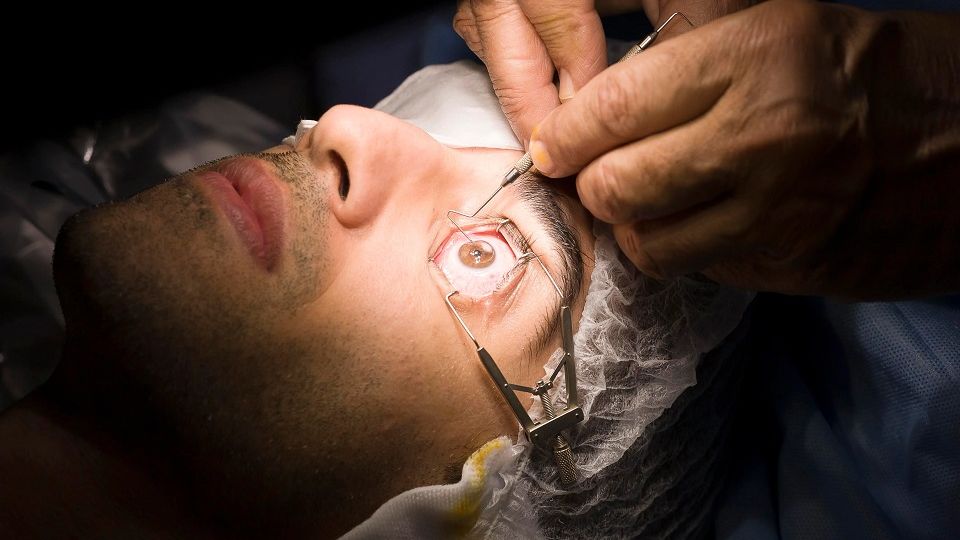
What Is Glaucoma?
A group of eye conditions known as Glaucoma can lead to complete vision loss and blindness by damaging the optic nerve. The Optic Nerve of the eyes is situated at the back of it. Generally, people fail to notice the symptoms at first because they appear gradually. A proper dilated eye exam is the only way to check if you have Glaucoma. Although there is no known treatment for Glaucoma, but early detection and treatment may reverse the vision loss.
With time, it becomes worse. At most of the time it has to do with an increase in pressure inside your eyes. The optic nerve, that can send images to the brain, can be damaged by increasing intraocular pressure in the eyes. Glaucoma can result in total blindness or irreversible vision loss if the condition develops within a few years. Most glaucoma patients do not experience any pain or visible symptoms. Regular eye checkup will enable your eye doctor to detect and treat Glaucoma before it causes long-term vision loss.
There are commonly three types of Glaucoma:
Open-Angle Glaucoma
A chronic, progressive, and irreversible optic neuropathy known as open-angle Glaucoma is defined by an open angle of the anterior chamber, changes to the optic nerve head, progressive loss of peripheral vision, and loss of the central visual field. Increased intraocular pressure, which can come from primary or secondary causes, is a significant risk factor for open-angle Glaucoma.
Angle-Closure Glaucoma
Acute angle-closure glaucoma manifests as a sudden, intense headache or pain in one eye, nausea, vomiting, rainbow-colored halos surrounding bright lights, and blurred vision. A fixed midway pupil and a foggy or hazy cornea with apparent conjunctival injection are visible on physical examination.
Congenital Glaucoma
In the absence of additional ocular or systemic developmental anomalies, primary congenital Glaucoma (PCG) is a rare condition caused by genetically defined abnormalities in the trabecular meshwork and anterior chamber angle that lead to high intraocular pressure (IOP).
What Does LASIK Do To The Eyes?
LASIK eye surgery is the most common and well-known laser light operation to treat vision issues. LASIK, also known as laser-assisted in situ keratomileuses, is an option for glasses or contact lenses. To enhance vision, a specialized cutting laser is used during LASIK surgery to accurately alter the shape of the cornea, the dome-shaped transparent tissue at the front of the eye. The cornea accurately bends (refracts) light onto the retina at the back of the eye with good vision. However, nearsightedness, farsightedness, or astigmatism cause the light to be bent improperly, causing hazy vision. Although vision correction with glasses or contact lenses is an option, reshaping the cornea will produce the required refraction.
Although vision correction with glasses or contact lenses is an option for many, reshaping the cornea will also produce the required refraction.
Some eyesight issues that may be corrected by LASIK surgery are as follows:
Nearsightedness (Myopia) (Myopia). Light rays focus in front of the retina and distort distant vision when the cornea curves too sharply or when your eyeball is a tiny bit longer than average. Nearby items can be seen reasonably clearly, but distant ones cannot.
Farsightedness (Hyperopia) (Hyperopia). Light focuses behind the retina not on the retina when the cornea is overly flat, or the eyeball is shorter than normal. This results blurry near- and occasionally far-sightedness.
Astigmatism. Astigmatism occurs when the cornea flattens or bends irregularly, disrupting the focus of both near and far vision.
Most people thinking about LASIK surgery already wear glasses or contact lenses. If LASIK surgery or another similar refractive technique is an option, your eye doctor will discuss it with you. But in all cases, LASIK Surgery is not an option to cure Glaucoma. LASIK eye surgery can not treat any Glaucoma with this Laser operation.
Treatment Of Glaucoma Via LASIK Eye Surgery Method
An ordinary refractive eye operation used to correct nearsightedness, farsightedness, and astigmatism is LASIK (laser-associated in situ keratomileuses). The surgery reshapes the cornea, the eye’s outer layer, to enhance vision. LASIK cannot treat Glaucoma because it affects the eye’s optic nerve instead of the cornea, the eye’s outermost layer. Since LASIK is not an operation performed within the eye, it has no impact on the optic nerve and does not affect your overall risk of getting Glaucoma.
How Can Glaucoma Be Treated?
In most cases, medications can lower intraocular pressure (IOP) in your eye, but if they are insufficient, you may need laser or incisional surgery to reduce stress further. Your doctor might advise surgery if glaucoma medications and laser therapy haven’t helped to treat your Glaucoma. Surgery can help safeguard your vision and prevent it from deteriorating, but it cannot reverse vision loss or treat Glaucoma.
There are a few different glaucoma surgical procedures that can assist reduce eye pressure:
Trabeculectomy Surgery: A glaucoma procedure known as a trabeculectomy involves operating on the eye to open a new passageway to drain fluid from the eye. In the operating room, outpatient surgery is being carried out. Reducing eye pressure is used to stop the progression of glaucoma-related visual loss.
Glaucoma Implant Surgery: A little device called a glaucoma drainage implant is used to treat Glaucoma. Aqueous humor from the front of the eye does not adequately drain when a person has Glaucoma. The optic nerve is harmed due to pressure buildup in the eye. Glaucoma if it is not addressed properly, it leads to complete blindness. An aqueous or tube shunt, a drainage implant, creates a new pathway for the aqueous fluid to exit the eye—this aids in reducing eye pressure.
Minimally Invasive Glaucoma Surgery (MIGS): A collection of surgical operations known as MIGS procedures have five things in common. By enhancing physiological outflow processes, MIGS prevent significant changes in the standard ocular structure. MIGS should allow for rapid recovery with minimal additional downtime for patients—phacoemulsification surgery. We should easily incorporate them into traditional phacoemulsification surgery.
Conclusion
The therapy of individuals with mild to moderate Glaucoma has improved thanks to the development of microinvasive glaucoma surgery. But still, Glaucoma is a hazardous disease that can easily make you completely blind.

